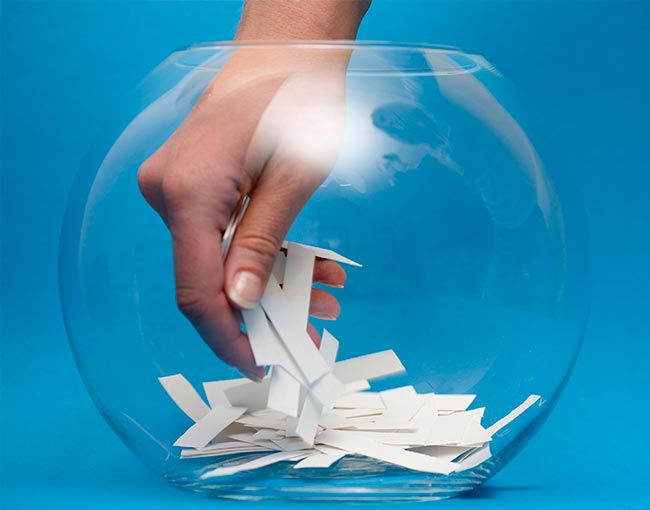I am often asked how random drawings should be conducted to select the winners of a sweepstakes. It sounds like a fairly simple request, but like most legal questions, “it depends.” For random drawings, it depends on the type of sweepstakes, the methods of entering, the number of entrants, the value of prizes, and other details of the promotion.
The threshold question is whether the sponsor will handle the drawing or arrange to have a third party select the winners. If the sponsor decides to have an ad agency, consultant, law firm or other third party conduct the drawing, that firm will usually determine the type of drawing that is appropriate. While this is usually an easy and safe way to select the winners, the sponsor should insist that the firm conducting the drawing enter into a contract in which it agrees to protect the sponsor from any liability and indemnify it from any damages resulting from problems with the drawing.
If the sponsor decides to conduct the drawing itself, there are several things it should be aware of before selecting the winners. First, and most importantly, the sponsor needs to make certain that it has all of the entries – both eligible and those that have been found to be ineligible. And, it should double-check the ineligible entries to confirm the reason that they are in fact invalid.
After the sponsor has all of the eligible entries, there are a number of ways that can be used to select the winners. The simplest is pulling the winning entry from a hat (or other container) that holds all of the eligible entries. This works best for sweepstakes that have a relatively small number of entries and use identical-sized entry forms. If entries were allowed in some other form, such as mail-in cards, the information on those entries must be transferred to an entry card and added to the other entries before the drawing can be held.
On the other end of the spectrum, if thousands of entries are received online, the sponsor may decide to use a random number program that will automatically select numbers at random from the total number of entries that sponsor has received. Similar to the “entries in a hat situation,” if there are any entries that are received by mail, those entries should be assigned a number that can be added to the previously numbered online entries.
Regardless of what selection method is used, it is important to document the process that is used to select the winners. One commonly used approach is to videotape the drawing and conduct it in a public location where entrants can be present. Sponsors also usually prepare a memorandum describing the process and how the entries were received, reviewed for eligibility, and accumulated with other entries. The memo should also explain how the winners were selected and notified. The sponsor may also want to obtain an affidavit from any judges who were involved in selecting the winners. If it’s not possible to create a video, a memo, photos of the drawing and affidavits of the judges should prepared.
While it is unlikely that such documentation will be needed after the sweepstakes is concluded, in the event that it is necessary to describe how the random drawing was conducted, the sponsor will have valuable evidence as to what occurred.
As always, you should contact a lawyer who is familiar with sweepstakes and contest law before conducting a random drawing for your sweepstakes.
This post was written by retired Thompson Coburn partner Dale Joerling. If you have any questions about the topics discussed in this post, please contact Thompson Coburn partner Hap Burke.




